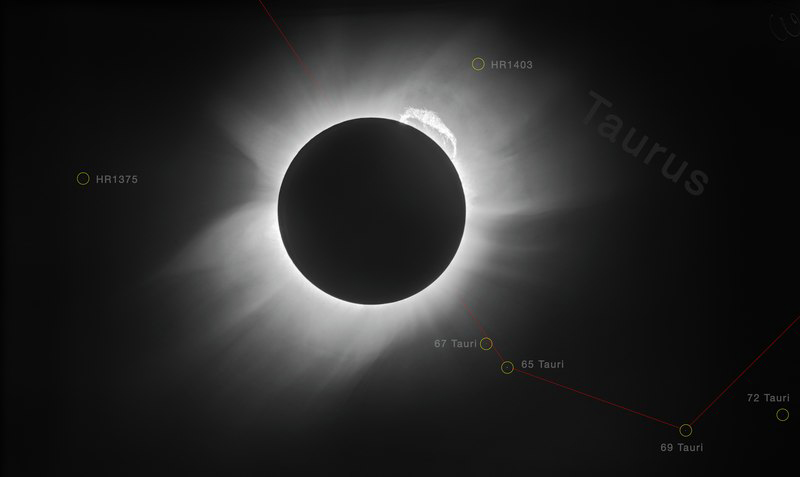The Context of Scientific Progress: World War I and the Theory of General Relativity
Spring
2020
Feature
The Context of Scientific Progress: World War I and the Theory of General Relativity
Kendra Redmond, Editor
 In May of 1919, Arthur Stanley Eddington led an expedition to the West African island of Príncipe. It was a scientific expedition but not of Príncipe or its surroundings. The subject was Albert Einstein’s theory of general relativity. The plan was to look upward from the strategically located island and capture the positions of stars near the sun during a solar eclipse.
In May of 1919, Arthur Stanley Eddington led an expedition to the West African island of Príncipe. It was a scientific expedition but not of Príncipe or its surroundings. The subject was Albert Einstein’s theory of general relativity. The plan was to look upward from the strategically located island and capture the positions of stars near the sun during a solar eclipse.
Astronomers knew that starlight passing close to the sun would be deflected—the question was by how much. Newtonian gravity predicted one value and Einstein’s recently developed theory of general relativity, another. Measuring the apparent positions of stars near the sun during an eclipse was a litmus test of a new and rather controversial field.
The expedition was successful despite the fact that “monkeys found the equipment fascinating, with lots of knobs to twiddle,” Jocelyn Bell Burnell told 2019 Physics Congress attendees during a plenary talk on the subject. The test validated the theory of general relativity, and word spread quickly, boosting Einstein’s notoriety.
But was that conclusion foregone? In her talk, Bell Burnell asked attendees to consider some of the ways that the stars had to align in order for this to be the outcome.
Einstein was living in his home country of Germany in 1915, the year he published the theory of general relativity. Eddington was English, living in Cambridge. At the time, British forces were actively fighting German forces, and England was characterized by anti-German attitudes, even within the scientific community. Luckily for Einstein, his 1915 paper landed on Eddington’s desk.
“Eddington was interested in science, not Einstein’s nationality,” says Bell Burnell. Had Eddington been unwilling to read and support the work of a German, modern physics may have progressed much more slowly. Or had the stars been completely obscured by clouds that night in Príncipe. Or had the war not ended just in time to move forward with the expedition. Or had Eddington not been a great science communicator. Or had the world not been so desperate for good news that confirmation of Einstein’s theory made newspaper headlines around the world. Or had the monkeys come out on top.
In experiments and analysis, physicists control for outside influences at the highest standard. But political, societal, social, and financial conditions influence the path of scientific progress all along the way. There is no Faraday cage for politics or a vacuum chamber that keeps out financial considerations. For better or for worse.
Virginia Trimble, an astronomer and science historian at the University of California, Irvine, provides even more context on the events leading up to this first test of general relativity in a class on how World War I (1914–18) impacted the sciences. During the war, many scientists, including Einstein, were going hungry due to low agricultural output, halted imports, and price controls. Work was interrupted as scientists became soldiers, and sometimes, as in the case of the exceptional English physicist Henry Moseley, they became casualties. The number of research publications decreased dramatically across the world, and once-thriving international scientific collaborations collapsed. “All science suffered greatly,” she says.
But science has also benefited greatly from war.
Trimble notes that as men left for the battlefield, jobs in academia and industry were suddenly open to women—accelerating the pace with which women contributed to STEM fields and received the right to vote in many countries. Portable x-ray equipment, facial reconstruction, and prosthetics work advanced quickly, driven by attempts to keep soldiers alive and functioning. Developments in chemistry yielded new explosives and poisonous gases but also enabled the large-scale production of fertilizer, necessary to maintain food supplies even today. Infrared-sensitive photographic emulsions developed for reconnaissance formed the basis for astronomical advances. Sonar technologies developed to locate submarines have been adapted to map the seafloor and track biodiversity. “Nearly all technology advances come from war,” Trimble says.
Trimble has turned her attention to the history of astronomy in recent years because of a natural curiosity but also because the past holds valuable context. “As many sages have said, Those who will not study history are doomed to repeat it. There is certainly some truth in that,” Trimble says. The opposite is also true, she notes. “Things have unintended consequences. Knowing what’s happened in the past can shed light both on how people react now and on what we might do now to avoid something that went badly in the past.”
Reflecting on what lessons can be drawn from the story of Einstein and Eddington, Bell Burnell offered these thoughts to physics students. “It’s always a good idea to try and make your own luck,” she says. “Try and identify people of integrity, of honesty, and upstanding [character]. Those are the people you want to associate with.”



